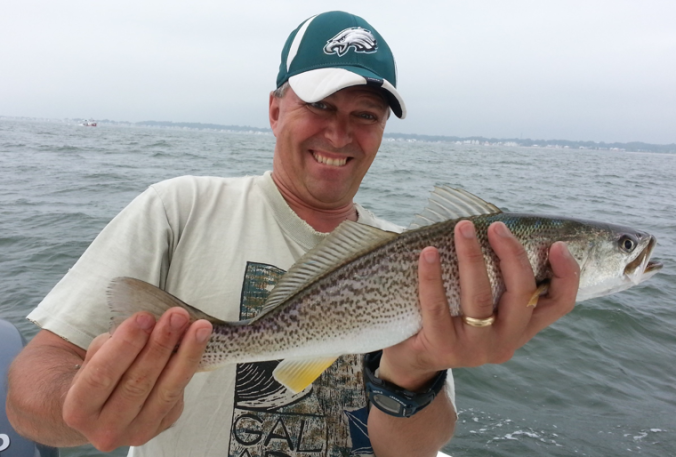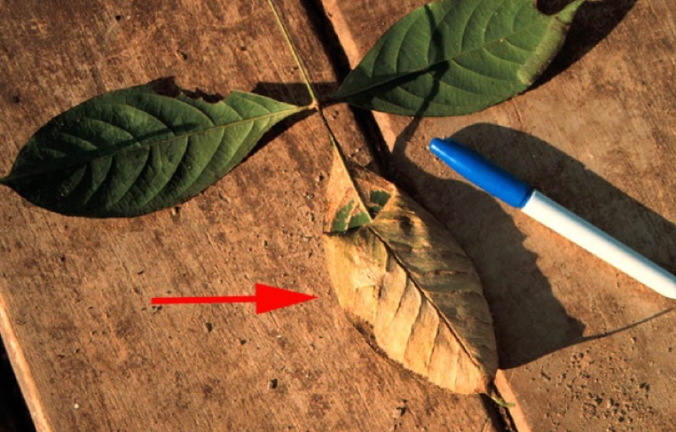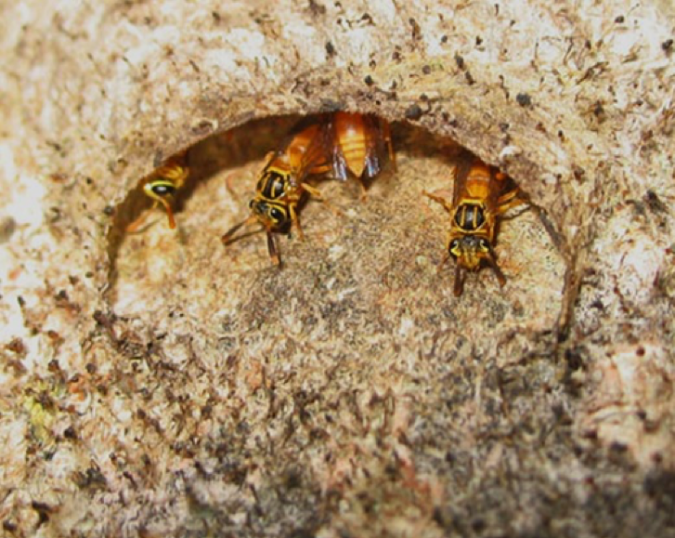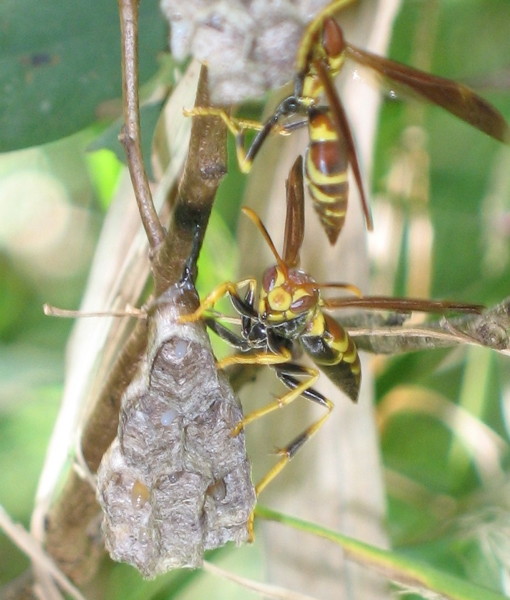IS: Who are you and what do you do?
My name is Sean O’Donnell, and it has been since the day I was born. I spend much of my time conducting research that focuses on social insects. Ongoing projects in my lab involve various combinations of thermal physiology, population genetics, community ecology, social interactions/division of labor, and brain plasticity/evolution, working with army ants, theory/equations, dampwood termites, paper wasps, and antbirds. I have dabbled in bumble bees (delightful), leaf cutter ants (bumbling vegetarians), and stingless bees (yes, but they bite). I also teach- in the field and in the tropics as often as possible. I was a Psychology (!) Professor for 15 years until 2011, when I moved to Biology and BEES (Biodiversity Earth & Environmental Science) at Drexel U. in Philadelphia.

IS: How did you develop an interest in your research?
I didn’t really grow up as a bug-kid; I was more of a broad-ranging junior naturalist, though I have been obsessed (I say healthily so) with Amazonia since age 5. I took AP Biology (on purpose) in high school and majored in Biology in college. A senior thesis project on dragonfly nymph ecology opened my eyes to the wonders of planet insects. After a failed foray into plant population biology graduate work, I found my way to an NSF-funded RA-ship with Bob Jeanne (Wisconsin) to study paper wasps in Costa Rica (to whoever backed out of this position on Bob at the last minute- you have my sincere gratitude!). It was in graduate school that I got my first real exposure to multi-level selection and colony-level adaptations- my conceptual drivers- and I really got hooked on social insects during my 1988 Organization for Tropical Studies course. I did an independent project on Polistes instabilis wasps; I fell hard for wasps and never lost that passion.
IS: What is your favourite social insect and why?
I do have faves, but in different categories. Overall amazingness plus mystery: the army ant Labidus coecus. Joy to watch & collect data upon: Polistes wasps. Cutest: Nectarinella championi wasps. Best nest: Leipomeles dorsata wasps. At the other end of the scale, after working intimately with Solenopsis fire ants recently, I would say they are rather miserable (I still have scars).

Best nest: Red arrow indicates a nest of the paper wasp Leipomeles dorsata on the underside of a leaf blade in Yasuni, Ecuador. The tan area is the dome-like envelope of the nest; note the indented lines, with black material built in, that closely resemble the veins of the supporting leaf.

Cutest: Workers of the paper wasp Nectarinella championi peer from their nest entrance on a tree trunk near Monteverde, Costa Rica.

Joy to work with: Polistes instabilis paper wasps on a newly-founded nest in Guanacaste, Costa Rica.
IS: What is the best moment/discovery in your research so far? What made it so memorable?
I will never forget the feeling of raw inspiration on the sunny day when I was dining at a Monteverde, Costa Rica Friends’ Meeting potluck many years ago. I was sitting in an open spot enjoying good food and good company, when a small swarm of subterranean Labidus coecus army ants emerged at my feet to grab dropped bits of yummy home-cooked chow. “Wow,” I thought, “army ants really don’t like hot sunny areas. The nearest shade is many meters away. These gals travel underground… I bet doing that buffers them from the sun, and allowed them to get way out here in the open to this food…” My research program is still building on that moment.
IS: Do you teach or do outreach/science communication? How do you incorporate your research into these areas?
I regularly work as a field consultant with natural history film productions, most recently in flooded forest in Amazonian Peru. That was an awesome site. I have worked both on- and off-camera with seven different natural history film crews, beginning in 1998. Until my recent fire ant gig, and a cameo with leaf cutters, I have been type-caste (pardon the social insect pun) as an army ant expert. That would be less good if I did not really love army ants, and the tropics. I like to think that the world’s stock of army ant natural history film making would be depauperate if not for my input. The possibility of reaching millions of viewers globally, and awakening their inner army-ant loving fiends, really floats my boat.
IS: What do you think are some of the important current questions in social insect research and what’s important for future research?
Well, I won’t give away my hottest current ideas, but it sure seems like social insects are SUPERB systems for analyzing directional climate change effects, from the organism to the ecosystem. I think understanding the interplay of individual physiology and colony performance in varying environments is a fascinating area for exploration. See my recent (20117) theory paper with Kaitlin Baudier on this topic: Current Opinion in Insect Science 22:85-91.
IS: What research questions generate the biggest debate in social insect research at the moment?
A golden oldie…How do we make the evolutionary jump from solitary to obligately social?
IS: What is the last book you read? Would you recommend it? Why or why not?
I just finished Teddy Roosevelt’s 1914 book about exploring an unknown river in Amazonia in the company of the legendary Colonel Rondon (Through the Brazilian Wilderness). I love exploration/travel/adventure writing, and this was a good tale. Some crazy things happened out there in the then-unknown wilds: near-starvation, murder, insane rapids, indigenous people attacking, and it was done by an ex-US president! Who could imagine?
IS: Outside of science, what are your favourite activities, hobbies or sports?
I gravitate toward outdoor activities- hiking, birding, canoeing, fishing. I love the ocean and international travel. I also sing bass in a local chorus. I am not much into professional sports, except that I am a rabid life-long Philly sports fan. Hello, Bryce Harper, wake up!
IS: How do you keep going when things get tough?
I turn to coffee, mostly. And I don’t give up easily; I try to find another angle.
IS: If you were to go live on an uninhabited island and could only bring three things, what would you bring? Why?
- My family, so they could do most of the work. Or the Darma Initiative staff.
- Good set of metal tools. Building, harvesting, cutting…
- Small nuclear sub, in case we decide to leave.
IS: Who do you think has had the greatest influence on your science career?
My Ph.D. advisor, Robert Jeanne- true wasp expert, skilled writer, careful and critical thinker, patient and inspiring mentor, tropical biologist. Bob also mixes a mean Manhattan.
IS: What advice would you give to a young person hoping to be a social insect researcher in the future?
Spend time watching your study animal(s). Observation often pays off in ideas.